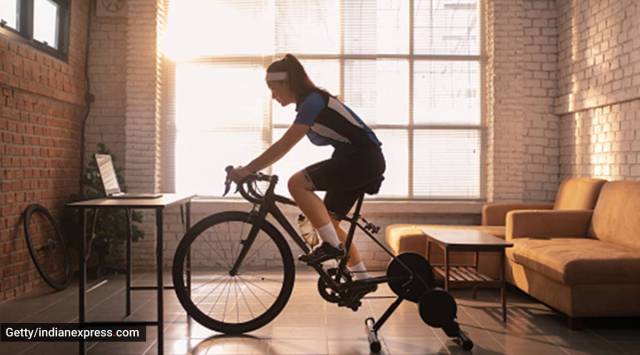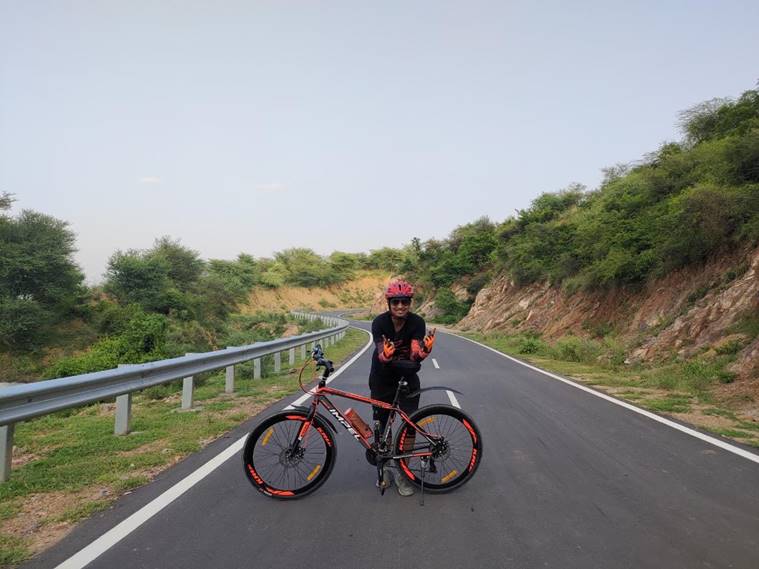- India
- International
‘Cycles in high demand’: How COVID-19 has affected the sale of home fitness equipment
While the demand for fitness equipment has visibly increased in the metro cities, tier II and tier III cities are not exactly lagging behind
 There has been an increasing demand for fitness equipment across India. (Source: getty images)
There has been an increasing demand for fitness equipment across India. (Source: getty images)While keeping people at home to contain the spread of coronavirus, the lockdown also meant that fitness enthusiasts were no longer able to hit the gym. At the same time, doctors emphasised on the need to exercise daily to boost immunity and battle mental health problems, which saw a rise during the period. With no option left, people now had to work out at home to keep themselves healthy. So it is not surprising that in the past few months, we have seen Instagram trends on home workouts, with many celebs and fitness experts showing how to do no-equipment exercises while others demonstrating ways to use household items, from fruits to a mop, as replacements.
With public gyms being shut amid the coronavirus-led lockdown, fitness brands saw a rise in the demand for home equipment. “Fitness equipment sales in India are governed by commercial sales. So let’s say for every Rs 100 of turnover in this industry, Rs 85 is via commercial sales. The lockdown, however, saw a drop from this number in terms of commercial sales and a rise in the home equipment segment. But the overall turnover in the industry has not increased. The bigger companies are doing similar amounts of business, but instead of commercial, they are doing it in the home-use segment,” Prateek Sood, director, Grand Slam Fitness, fitness equipment manufacturer, told indianexpress.com.
India being a price-based market, the most-ordered fitness equipment were the ones that were the cheapest, said Sood, including dumbbells, plates, rods, racks and benches. “Very few are venturing into cardio (treadmills and cycles) and only a really small number of people are buying luxury equipment,” said Sood.
A recent report by Facebook India, in association with Boston Consulting Group, traced a ‘never-before’ focus on health and fitness among consumers amid COVID-19. So much that people were ready to purchase domestic fitness equipment at double the price, said Amit Sethi, director, Syndicate Gym Industries. “During the initial phase of the lockdown, if the price of one equipment was Rs 100, shops were selling them for Rs 300. Right now, in the Unlock phase, that may have reduced to Rs 150, let’s say,” he said.
Despite fitness stores opening after the Unlock, people are still resorting to online shopping. Mohit Tannu, sports leader and digital reference, Decathlon, Delhi NCR, highlighted, “During the lockdown, people were ordering from our website and mobile application. Our first store in Delhi NCR opened on May 27 and we had expected that the share of online sales to drop thereafter. But that has not happened. Close of 20-25 per cent of sale from the capital city is coming from online; earlier it was only three to five per cent. The store share, on the other hand, has started to come down, as compared to last year.”

“In the core lockdown months, we were only selling light fitness equipment like dumbbells. Post lockdown, people have started buying heavy gym equipment like benches and home gyms. But one major boost that we have seen is in the sale of cycles — both stationary and regular ones — which are very much in demand, in the absence of a gym visit,” he added.
Tarun Sharma, 35, Gurgaon, who bought a hybrid cycle (a kind of road bike with a straight bike) during the lockdown, said, “I had been a regular at the gym and was also playing cricket on a daily basis before the lockdown. But amid the pandemic, cycling was the only sport I could continue while maintaining social distancing. I usually cycle in the morning; so far I have covered more than 1000 km.”
 Tarun Sharma during one of his cycle rides.
Tarun Sharma during one of his cycle rides.
Harman Singh, 27, Gurgaon, on the other hand, has formed a team of cyclists who ride up to 30-40 km on an average in a day. “While I already had a cycle, a lot of my friends bought it recently. We have a small group of 10-11 people, who were getting bored so we decided to cycle everyday in the morning. The maxium we have covered is about 51-52 km in a day.”
Read| Post lockdown, how does outdoor fitness change? An expert answers
The pandemic has posed extreme challenges, no doubt, but the only silver lining is that it has sensitised people about best hygiene practises, healthy eating and lifestyle, including the importance of physical exercise, all the more necessary to reverse the effects of our otherwise sedentary lifestyle. “The demand for home fitness equipment has been very high not just throughout the lockdown but even after that in the Unlock phase. Most people do not usually like to work out at home but the current circumstances are such where they have to because everybody wants to be fit,” Sethi said.
While the demand for fitness equipment has visibly increased in the metro cities, tier II and tier III cities are not exactly lagging behind. “The demand is very high in the metro cities although there is a rising demand in tier II and tier III cities also. One could say there is an overall increase in demand for domestic equipment because people are still scared of going to public gyms,” Sethi said.
Meanwhile, the Centre has given its nod for reopening of yoga institutes and gymnasiums in non-containment zones, with a fresh set of guidelines to ensure maximum safety against the spread of the virus.
Apr 25: Latest News
- 01
- 02
- 03
- 04
- 05



































